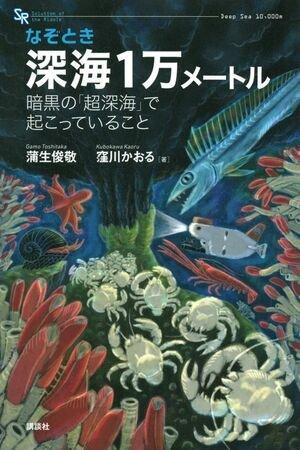The world of "super deep sea", which is as interesting as the universe, is 10,000 meters under the sea
In 2020, it became news from all over the world that the asteroid spacecraft Hayabusa 2 was safely brought back as a sample to elucidate the origin of life from the asteroid Ryugu.The story of the "universe" outside the earth often goes up to the news, but on the other hand, there are many opportunities to hear the story of the "deep sea" and "super deep sea" in the more familiarity.
Recently, the research technology of the deep and super deep sea has progressed, and clues that know the origin of life have been found in the deeply of the stars in our lives.Now, in the world of academics, the "deep sea" and "super deep sea" are hot.
For the deep sea and the super -deep sea world, such as environmental pollution that has been identified in the deep sea, and marine creatures that have evolved unique, publish the "Suri -Time Deep Sea 10,000 -meter -dark" Super Deep Sea "(Kodansha).We spoke to Toshihito Gamo (Professor Emeritus of the University of Tokyo, Doctor of Science) and Kaoru Kubokawa (visiting professor of Teikyo University's Advanced Research Organization and Doctor of Science).(Listle: Riko Seki, Seed Planning Researcher)
* At the end of the article, a video interview between Toshio Gamo and Kaoru Kubokawa is posted, so please take a look.
This book was shocked that the super -deep sea of over 10,000 meters was polluted by human -derived substances.Is there anything we can do in everyday life to protect the deep and super -deep sea environment in the future?

Toshihito Gamo (hereafter, Gamo): The sea is connected from top to bottom, so what we once flushed into the sea will sink and stay to the bottom of the sea unless it is quickly disassembled or recovered.It will be.
It is important to strongly hold such an image, pay attention when each person processes garbage, and keep artificial substances from flowing into the sea.An amazing paper has already been published that the deep -sea creature, which has already lived on the seabed 10,000 meters of the Mariana Trench, is polluted with artificial objects.
It has been pointed out that "Japan has a deep connection with the super -deep sea, but the super deep sea is rarely talked about in Japan."How do both teachers who specialize in the ocean feel about this?
Gamo: It is very disappointing that the super -deep sea is rarely talked about.The spread of general literacy in the deep sea is not yet sufficient.I published this book with the desire to get to know the deep sea.What is happening in the deep and super deep sea?We hope that ordinary people who are not sea experts will understand it and enjoy the results of the research with us.
Until now, interesting creatures such as Daiouika and Chotin Anko have been introduced in images, but the specific image of the deep and ultra -deep sea has not been introduced.I wrote the content to make up for it in this book.
For the time being, even if the state -of -the -art submarine ships have not been developed immediately in Japan, what kind of results are made by overseas full -depus submarines, such as the U.S. "Liming Factor" and China's "Struggle".I hope you will be able to introduce such news frequently.
マリアナ海溝で見つかった新種の発光クラゲ(提供:NOAA Office of Ocean Exploration and Research/AP/アフロ)ギャラリーページへKoul Kubokawa (hereinafter Kubokawa): As a researcher, I feel that I have to send out the results of research to the general public.
The Japanese have a food culture such as sushi, and the number of aquariums is the best in the world, so they are familiar with sea creatures.I want you to expand your interest in the sea where marine creatures live.There are mountains, valleys, and unexplored areas in the sea, and are rich in variety.I also want you to look at what kind of marine research and adventures are being underway in Japan and overseas.
